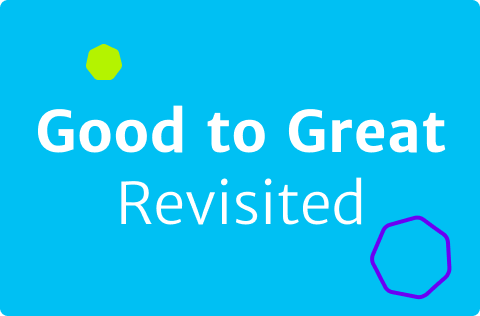
First ‘Who’ Then ‘What’ – Good to Great Revisited
The types of companies that Jim Collins researched for Good to Great were quite large (think Wells Fargo and Kroger) so when he wrote this chapter he was looking at global corporate strategy. His point was to look at your talent and let that drive your direction. His specific points were to make sure you have the right people on the bus and then make sure they are in the right seat. Only after your team is in place will their strengths lead you to your strategy.
The genius of this should be obvious. Most companies tend to set their direction and then either force people or entice people or hire people to execute it. This simply doesn’t work, Collins found. People first; strategy second. That works.
So what about us? We aren’t Wells Fargo and most of us either manage a branch office, a small company or a comparatively small region or team. Is this still true? I say, “Yes.”
Talent is the core of any business. Any strategy that doesn’t align with the abilities of your people is bound to fail or, at least, be weakly executed.
So what do we do?
- Hire the best talent you can afford. Never settle. An empty chair is better than a chair badly filled.
- Invest in training, developing and equipping your team to succeed. This means ensuring they are involved in every formal and informal learning opportunity your company offers.
- Retain your team. Every person you lose and replace sets your business back. Some say the cost of turnover is at least equal to the person’s salary. When you look at lost productivity, time to replace, and customer relations it seems even higher.
- Reward the folks. After all, they are the ones who do the work. As a manager your work is to empower their work not take credit for it. Make sure they get the rewards and recognition they deserve.
- Finally, if someone should be on your bus make sure they are in the right seat. In other words, be certain they are in the spot where they can make the greatest impact. Many who aren’t cutting it in sales may thrive in operations and vice versa.
A business that doesn’t value, invest in and prioritize their people may survive. It may even thrive…for a while. Only those where people are paramount will make the leap from good to great and sustain their success for the long term. Which will you be?

Mike Baer was one of the early leaders in the modern Business as Mission (BAM) movement. He is the Chief Development Officer of EmployBridge, a $3.2 billion employment company based in the US. Mike is the Co-Founder of ThirdPath, a global company that helps Christians become entrepreneurs. He has written 3 books on BAM: Business as Mission, BAM for the Rest of US, and Gospel Entrepreneur. Today Mike and his wife reside in the mountains of North Carolina where they enjoy their 5 grandchildren.
